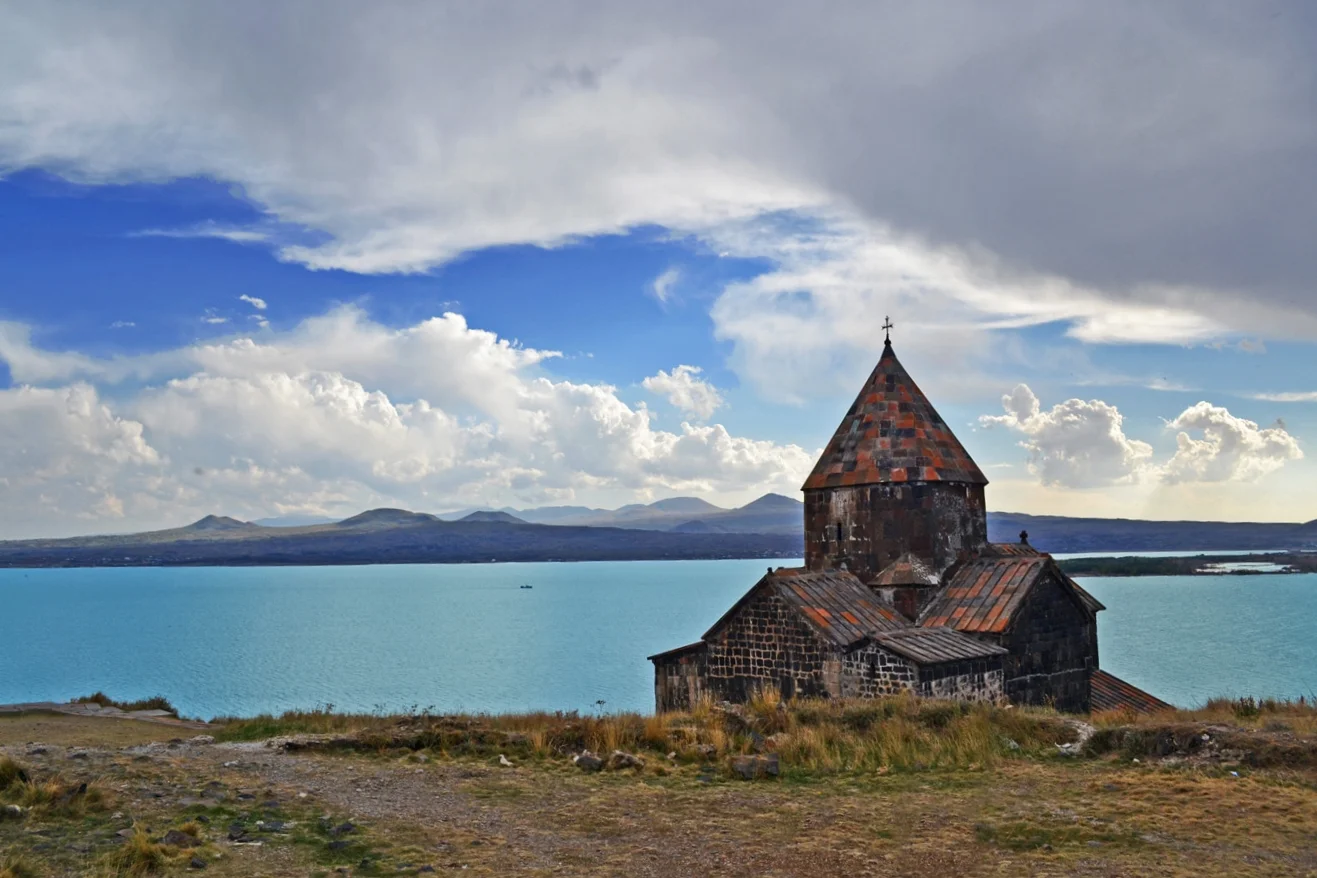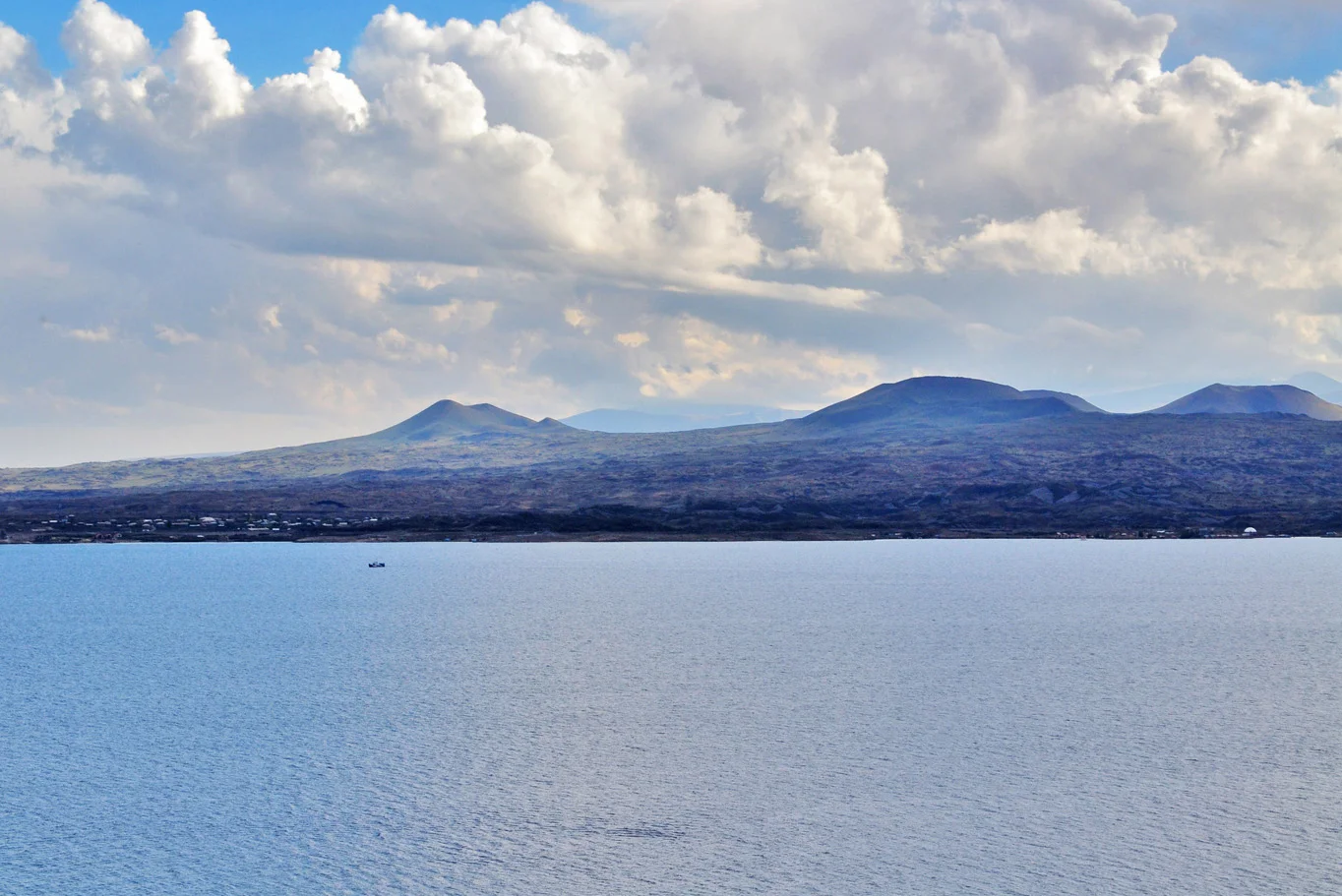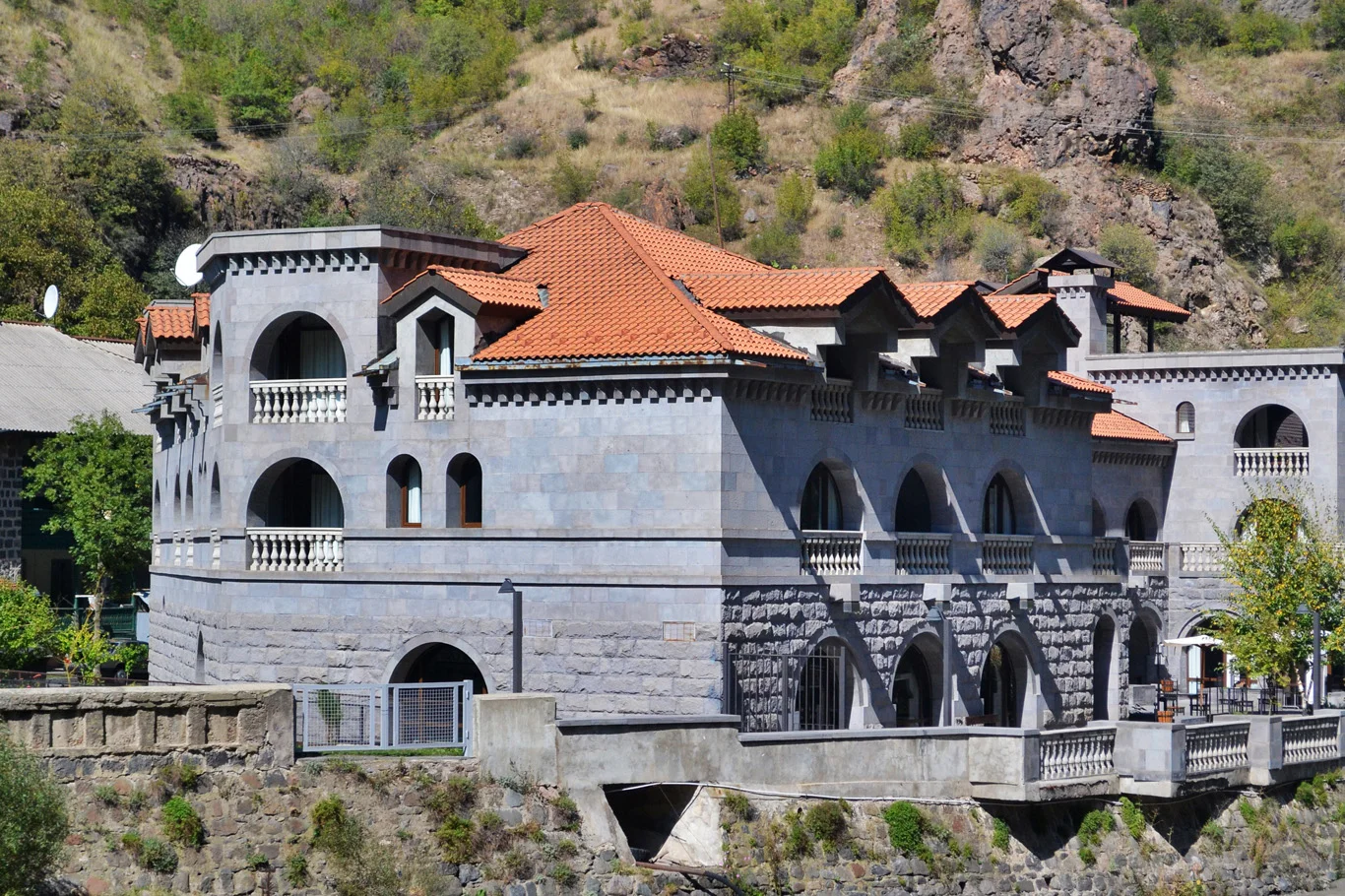It's unbelievable how diverse Armenia is, how astonishing the landscapes are and how many attractions are packed within such a small territory. From the amazing view of snow covered Mount Ararat, through gorges, canyons and sandstone formations to the ancient temples and monasteries carved into the walls of the cliffs. Even driving through Armenia is an attraction in itself. It's a great experience to discover something new, a country that is not visited by crowds of tourist and where a foreigner is still a rare sight.
Sevanacank Monastery
Lake Sevan
Sevanavank Monastery
Lake Sevan
Lake Sevan
Lake Sevan is the largest lake in Armenia and the Caucasus region. It's also one of the highest located lakes in the world at the altitude of 1900 meters (6230 ft.) above sea level. The lake lies in the eastern part of Armenia and its blue waters contrast beautifully with the bare, brownish scenery of the nearby mountains. Lake Sevan is also called "Armenian Sea" as it's the only large water basin within the country. In the summer, it becomes a local tourist attraction and Armenian people spend there their summer holidays. However, the climate is considerably colder than in the rest Armenia due to high altitude. When I visited Lake Sevan, in September, it was more than 25 degrees Celsius in Yerevan (77 degrees Fahrenheit) while at the Lake, it was only around 15 (59 Fahrenheit).
Sevanavank Monastery
Sevanavank Monastery was originally a complex of three churches, two of which are still perfectly preserved to this day. It was founded in 874 AD by Princess Mariam, the daughter of king Ashot I. When it was completed, the level of water in Lake Sevan was much higher than it is today and the whole monastic complex was located on an island. Later, during the twentieth century, the lake was artificially drained and the level fell about 20 meters (65 feet) creating the peninsula. Now, because of this, it's much easier to reach the monastery, one no longer needs to travel there by boat.
The stone which was used to built Sevanavank Monastery comes from the nearby mountains, and like all over Armenia, has the pinkish-red-brown color. Most of the buildings, houses and temples in Armenia are built out of this stone which makes them blend into the landscape perfectly.
Armenian alphabet letters on a hill
Armenian landscapes
Canyons in Armenia
Armenian countryside
Remote village
Remote village
Remote village
Bare mountains
Armenian countryside
To travel to Yerevan, I took an overnight train from Tbilisi. It was quite nice but there was one thing that I hated about it. Literally everybody was smoking inside. There was some kind of mist in the aisle, made of smoke. The journey took around 13 hours.
On the way back, I decided to take one of the Marshrutkas (mini van) that ran from Yerevan for a very reasonable price (11 EUR/15 USD) and this time, the journey took only about 5 hours. It was a great decision because, unlike on the train, I was able to admire the breathtaking Armenian landscapes. The countryside in Armenia is mainly dry, not forested, with many canyons and gorges along the way. The roads weren't in perfect condition and the ride was a little bumpy but it made it a bit more adventurous and cool. However, if you suffer from claustrophobia, don't even try to travel this way. All passengers were packed inside like mackerels in a tin.
In the middle of our journey, we had a stop at the roadside shop literally in the middle of nowhere where we could use the toilet (which hadn't been cleaned for, probably, a couple of years). We washed our hands from a pipe sticking out of the wall and continued the ride.
Further on, the breathtaking landscape was spoiled by the falling apart ghost factories that used to flourish during the Soviet Era. Where the terrain was flatter, you could spot some remote villages, with very simple houses strewn here and there. They seemed to be left alone out there as if no one gave a damn about them. Life in such remote places is must be quite repetitive and depressing, with few opportunities and hard to imagine for someone who lives in a big city.
Most of the photos here I took from the window of the marshrutka - mini van while driving.
Armenian countryside
Armenian architecture
A village among pointy peaks
Soviet era apartment blocks spoil the landscape
Picturesque valley
Geghard Monastery, carved into the wall of a cliff, more inf here
Typical landscapes in Armenia
Gas pipelines
Mount Ararat
Contrast - dry mountains and green pastures
Mount Ararat
Garni Temple, more info here
Caynons at Garni
Crosses at Geghard Monastery
Gate to the Geghard Monastery
Geghard Monastery
Rocky cliffs
Related Posts
Copying without permission is not allowed. If you wish to use any of the site's content (photos or text) or work with us, please contact us.
We welcome questions, advice, support or criticism. However, spam comments will be removed.




































